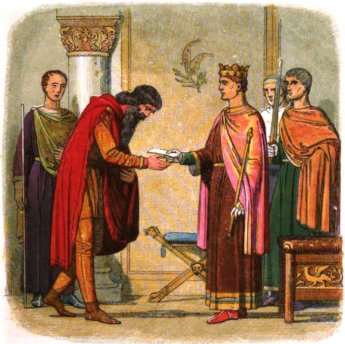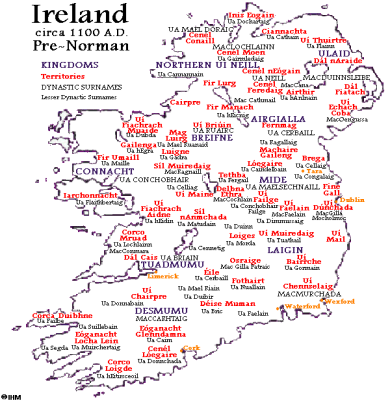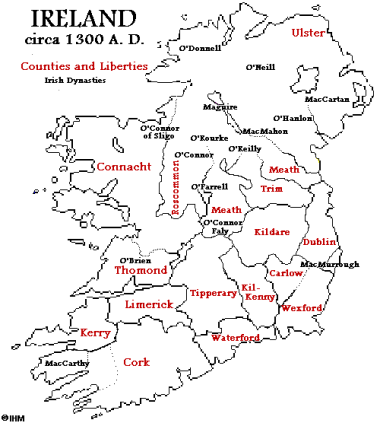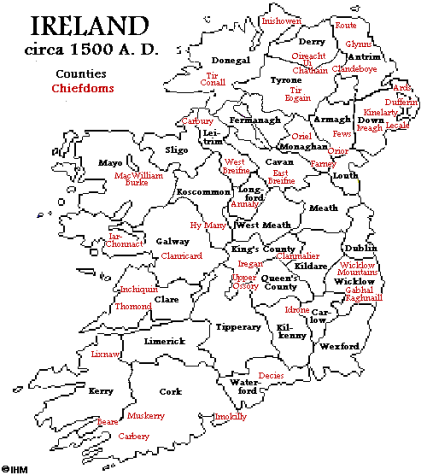Impact of Norman’s Conquest on Ireland
| ✅ Paper Type: Free Essay | ✅ Subject: History |
| ✅ Wordcount: 920 words | ✅ Published: 20 Sep 2017 |
Daragh Mc Mullan
Use archaeological, historical and literary evidence to assess the impact of the Norman conquest on Ireland’s political, social, economic and cultural systems.

https://en.wikipedia.org/wiki/Norman_invasion_of_Ireland
- Introduction
The Norman conquest of Ireland commenced in 1169, the immediate aftermath saw Ireland under a rotation of control by Anglo Norman lords and the King of England with challenge from the Irish. Up to this point, Ireland had seen recurrent conflict between provincial kingdoms who strived for High King status and the arrival of the Normans would throw what structure the Irish had into disarray. The invaders had a long history with conquering foreign lands but this time there were numerous distractions and troublesome conquests elsewhere to deal with. These distractions would almost result in a loss of control in Ireland and defeat to the native Irish.

(http://www.rootsweb.ancestry.com/~irlkik/ihm/ire1100.htm, n.d.)
- Political Impact
In the mid-12th and early 13th century there was major political change for the Irish. The King of England made Ireland a Lordship of his own empire and because of this the Irish went from securing title by defeat of local rivals to battling for possession of their own land from foreigners. The formation of the Parliament of Ireland in 1297 allowed the Anglo-Norman Lords to exercise control and implement their politics. At this time the island was politically divided into several overkingdoms, the main focal point was the Abbey. The Irish legal system known as the Brehon Law continued outside the controlled area but prisons were established as per Henry II’s reforms. Overall the Norman political impact was substantial but it lacked structure and more importantly continuity, and the troublesome times during the early and mid-14th century resulted in a loss of control and Ireland was far from under complete control of the British for over the two centuries that followed.
- Social & Cultural Impact
The social and cultural landscape of Ireland experienced changes, some events were devastating namely the famine and the Black Death. Some events, while chaotic, had good intention. The invasion by Robert the Bruce brought fierce battle against the English lords, there was extensive destruction and eventually the Scot was defeated but during the clash Irish families regained control of lands lost to them in previous combat. During the settlement period the Normans living outside Dublin and the area known as The Pale embraced the Irish language and their customs, they married into the clans, and coincidentally the native Irish also became like the Normans in many ways. Even today we still have evidence of this in the provinces of Munster and Leinster with many Norman origin surnames, Power, Roche and Burke.
Towns were perhaps the Normans’ greatest contribution to their new conquest. The increase in population saw the nobles invest in the construction of walled towns, numerous castles and churches changed Ireland and a system of counties commenced in 1297. The Church made a move to centre the congregation diocese
.
(http://www.rootsweb.ancestry.com/~irlkik/ihm/ire1300.htm, n.d.)
- Economic Impact
The Norman invasion brought a lot of changes to the economic situation in Ireland. The economy was mainly based on cows, sheep, pigs, goats and the products they produced. Cattle was the main asset as it provided milk, butter, cheese and meat. A herd of any type was considered a wealth and had the added benefit that it could be moved to safety in times of war. The Norman’s began to import tenants to occupy and work their newly acquired lands, horticulture was practiced prior to the Norman settlement, the main crops being oats, wheat and barley, but this increased during this time. This would boost the agricultural trade and was one of the many changes brought by the Norman invasion and occupation of Ireland. They introduced feudalism to the existing native tribal-dynastic crop-sharing system. Feudalism was intended to introduce cash payments into farming. Money was rarely used in medieval Gaelic society, as payment was normally made in goods or service.

(http://www.rootsweb.ancestry.com/~irlkik/ihm/ire1400.htm, n.d.)
- Conclusion
The transition from a nation to being part of the Tudor conquest was a turbulent road for the Irish. In the end the continuous rebellion was not enough to free them from the grasp of the expanding British Crowned forces. They co-existed to a certain extent with the placed nobles and later with the Hiberno Normans but the Monarchy expected a respect from the Gaelic Irish that just would not be given. The decline of the Monastic Abbeys and then the pressure on Christianity by newly founded rival churches and the implication of surrender and regrant where the Irish had to abandon their land, culture and religion in exchange for an English earldom meant that the ordinary native Irish people stood little chance at retaining their identity against the Tudor expansion.

(http://www.rootsweb.ancestry.com/~irlkik/ihm/ire1500.htm, n.d.)
Barry, T. (1987). The Archaeology of Medieval Ireland. London: Routledge.
Ellis, S. G. (1998). Ireland in the Age of the Tudors 1447-1603. London: Longman.
http://www.rootsweb.ancestry.com/~irlkik/ihm/ire1100.htm. (n.d.).
http://www.rootsweb.ancestry.com/~irlkik/ihm/ire1200.htm. (n.d.).
http://www.rootsweb.ancestry.com/~irlkik/ihm/ire1300.htm. (n.d.).
http://www.rootsweb.ancestry.com/~irlkik/ihm/ire1400.htm. (n.d.).
http://www.rootsweb.ancestry.com/~irlkik/ihm/ire1500.htm. (n.d.).
https://en.wikipedia.org/wiki/History_of_Ireland_(1169%E2%80%931536)#cite_note-2. (n.d.).
Cite This Work
To export a reference to this article please select a referencing stye below:
Related Services
View allDMCA / Removal Request
If you are the original writer of this essay and no longer wish to have your work published on UKEssays.com then please click the following link to email our support team:
Request essay removal


